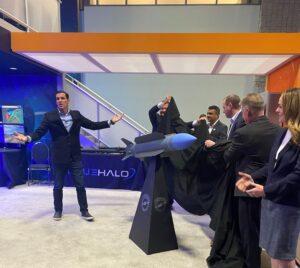
BlueHalo said on Oct. 9 that it has developed a Next-Generation Missile (NGM) for the U.S. Army Joint Counter-small Unmanned Aircraft Systems Office's (JCO) Long Range Kinetic Interceptor prototype effort to defeat Group 3 drones--those having a maximum gross takeoff weight above 55 pounds and below 1,320 pounds--as well as larger Group 4 and Group 5 UAS. The JCO's Long Range Kinetic Interceptor other transaction authorities effort is to develop and field a $200,000 or less unit cost counter UAS…














